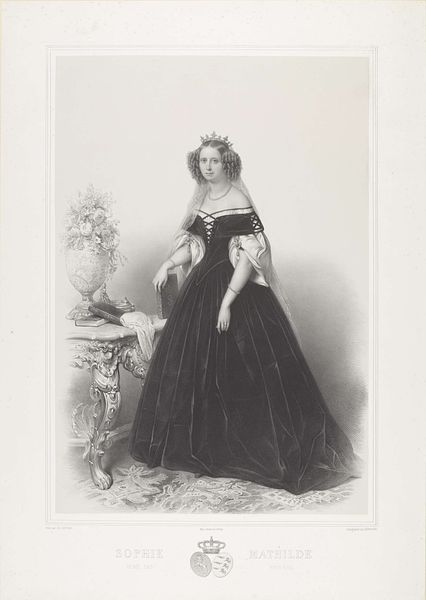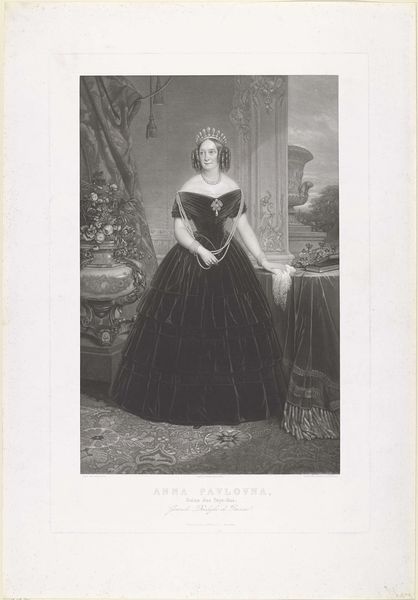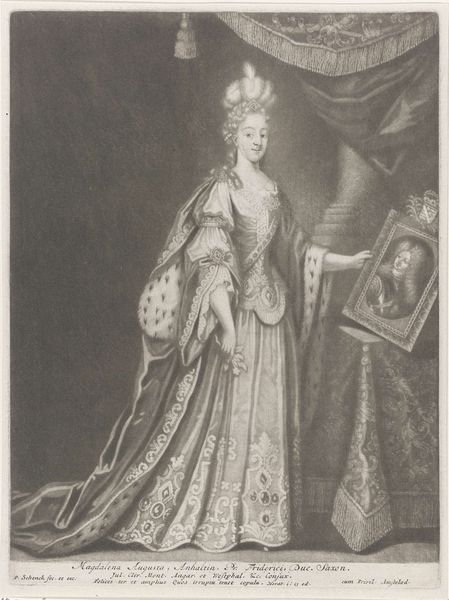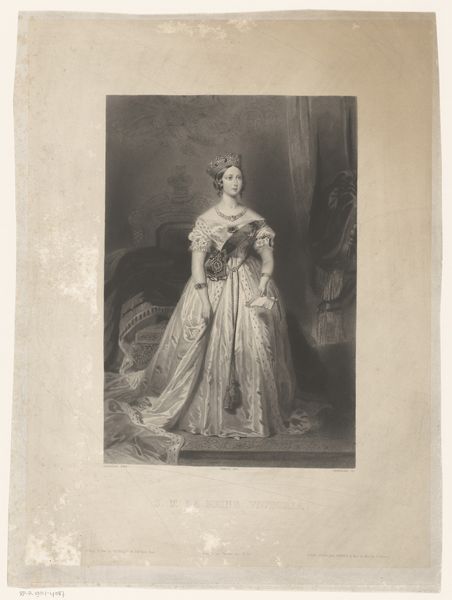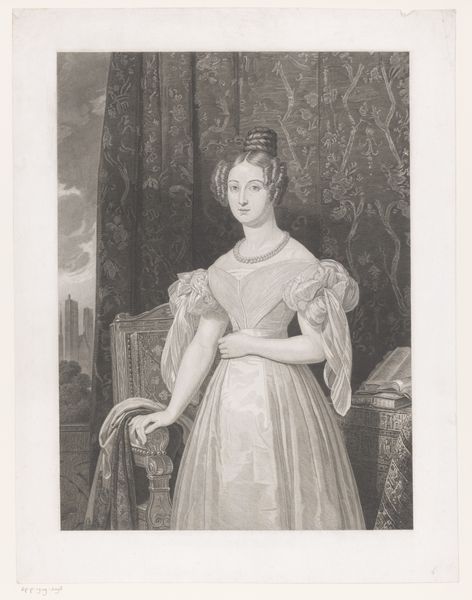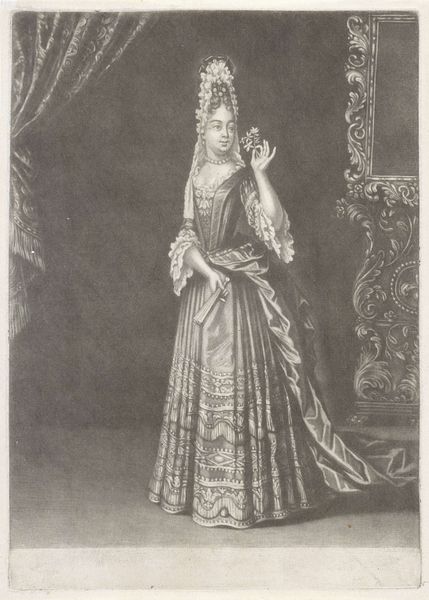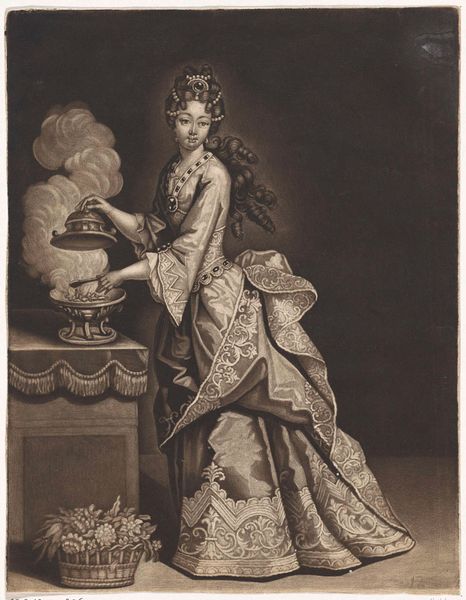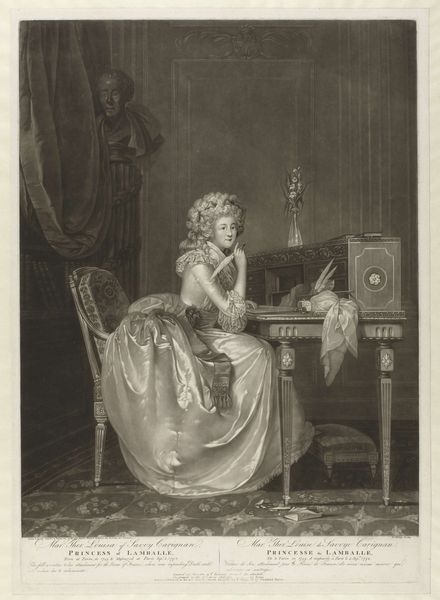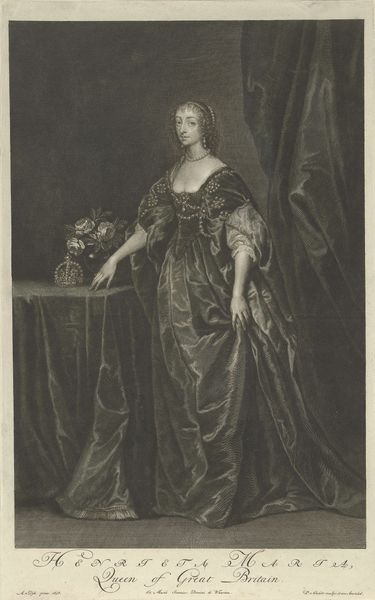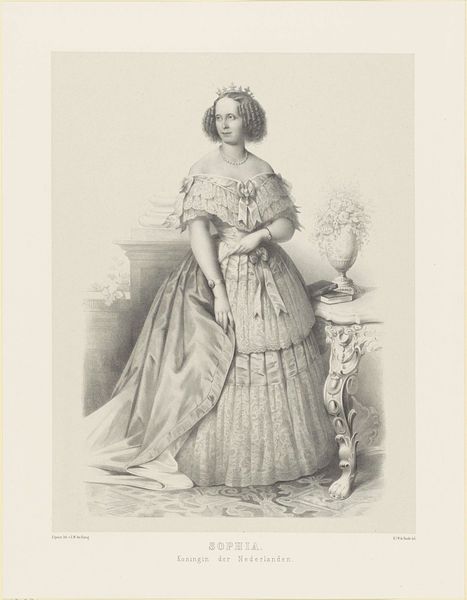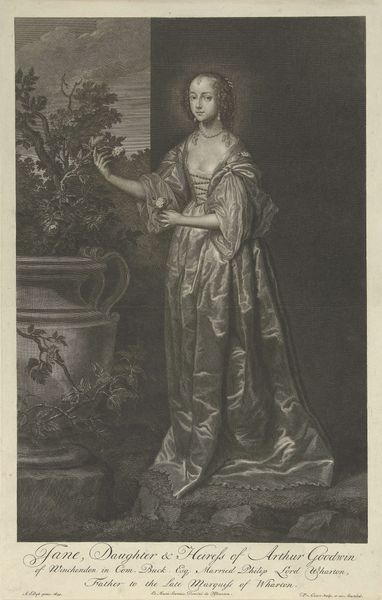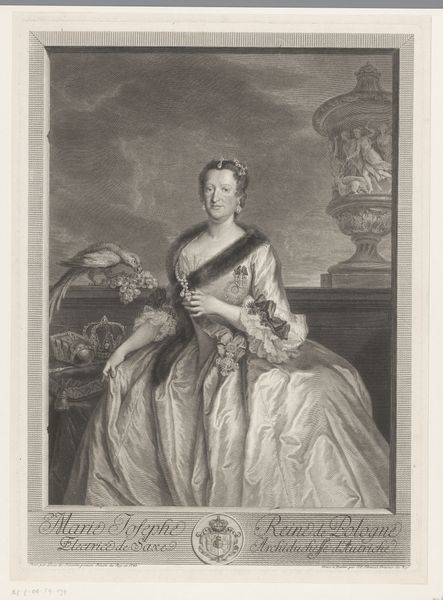
print, engraving
#
portrait
# print
#
historical photography
#
historical fashion
#
romanticism
#
19th century
#
history-painting
#
academic-art
#
engraving
Dimensions: height 659 mm, width 506 mm
Copyright: Rijks Museum: Open Domain
Curator: Before us, we have "Portret van Anna Paulowna Romanowa," an engraving created sometime between 1833 and 1863 by S. Rosenthal. It’s currently held here at the Rijksmuseum. Editor: It feels undeniably formal. Almost austere, despite the obvious luxury. The delicate greyscale gives it a reserved, almost ghostly quality. Curator: As an engraving, this work necessitated a highly skilled artisan translating a likeness, likely from a painting, into a repeatable image. This points to its function as a tool for disseminating an image of power and status widely. Note the ornate detail of the dress, suggesting laborious construction, likely by many hands of seamstresses and embroiderers. Editor: Absolutely. And she is quite adorned; observe the rose she's holding and her crown and jewels, particularly that elaborate ornamentation going down her gown! It’s impossible to ignore the weight of cultural expectation that rested upon her. The artist draws attention to her regality, and perhaps to the almost unachievable status for most people in that era. Curator: Right. Consider also the desk next to her: The placement, adjacent to a historical figure who herself influenced the history of this country, may very well signal education, authority, and intellectual influence, crafted from rare timber with imported ink, goose quills. Editor: Yes, it seems this imagery acts almost as a symbolic language of the era, an aristocratic portrait designed to communicate the queen's presence, with careful consideration of pose and background elements: roses, classical architecture, perhaps as coded reference of moral rectitude, divine right, or cultivated intellectual life? Curator: Precisely. This print becomes a means to produce and reinforce hierarchical distinctions by controlling representation. Think of the circulation; images like this solidify power in ways other means cannot. Editor: Indeed. And when viewed through the lens of enduring symbols, this work illuminates the persona she occupied on a cultural level. It encourages us to consider what lasting effect someone might have and what we think of historical ideals around monarchy and aristocratic identity. Curator: A powerful reflection on how an image, multiplied and distributed, contributed to both constructing and preserving an idea. The layers of production from conception to the final image, become part of how the image shapes history itself. Editor: This has been quite revealing. Reflecting on the iconographic dimensions together with its material reality offers such different, but also compatible perspectives.
Comments
No comments
Be the first to comment and join the conversation on the ultimate creative platform.
